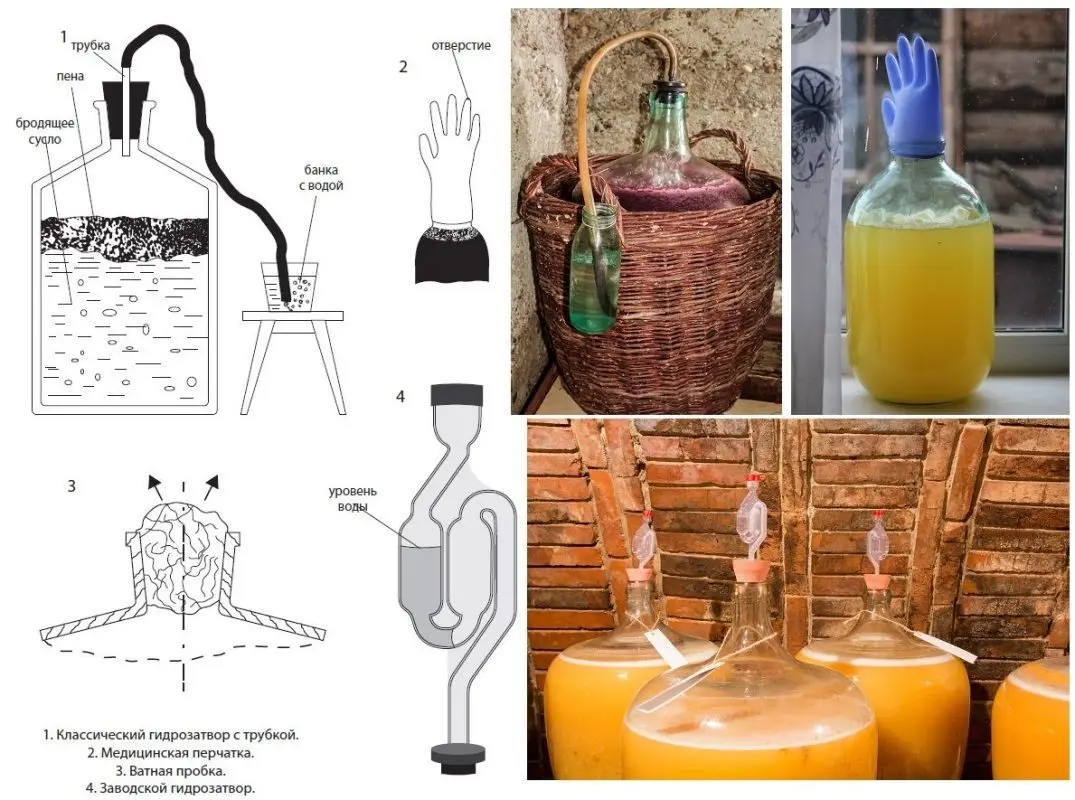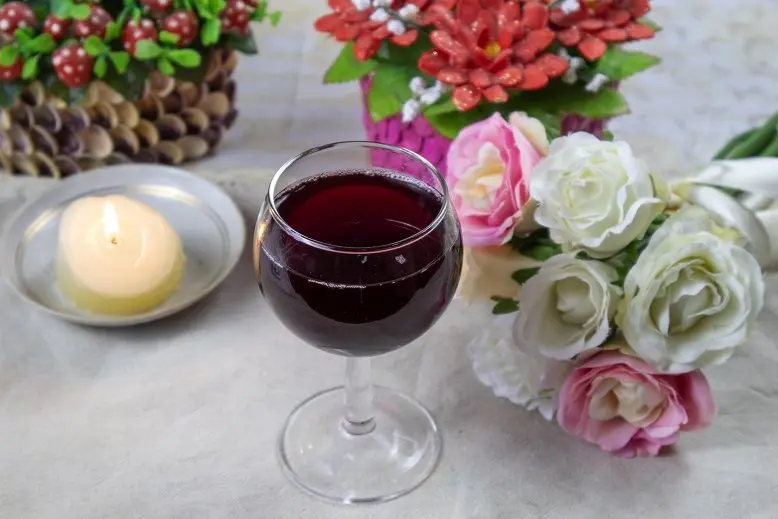In Russia, Cahors is a fortified sweet wine of dark ruby color, which is used in the rites of the Russian Orthodox Church. Cahors differs from other wines in the heat treatment of must, high sugar content (180 g/l) and alcohol (16% instead of 12-13%). For amateur winemakers, I suggest making Cahors at home according to a proven recipe. The resulting drink will be natural and no worse than store-bought.
Only red grapes of high sugar content are suitable for cooking Cahors. The best varieties are “Saperavi”, “Cabernet”, “Moldova”, “Bulany”, “Merlot”, they give a characteristic ruby color. Homemade Cahors can be made from any red varieties growing in the country, for example, Isabella, Regent or Lydia, but more sugar will have to be added at the final stage. The main thing is that the selected berries are ripe, without signs of mold and rot.
Ingredients:
- red grapes – 5 kg;
- sugar – 600 grams + 150 grams per 1 liter of juice;
- raisins – 100 grams (or wine yeast);
- alcohol (vodka) – up to 500 ml (optional).
To avoid contamination of the wort with mold and other pathogenic microorganisms, all containers should be sterilized with boiling water, and then wiped dry with a clean cloth.
Cahors Recipe
1. Sort the grapes, remove the ridges, leaves, unripe, rotten and moldy fruits.
2. Crush the berries with your hands or a wooden rolling pin, being careful not to damage the bones that give bitterness.
3. Place the pulp along with the juice in a clean enameled pan or bucket.
4. Heat the wort over low heat to 60-65°C, boil for 3 hours, maintaining the specified temperature.
5. Remove the pan from the stove, cool the contents to 25-28°C.
6. Add unwashed raisins to the must as a source of wild wine yeast, mix well (with a clean hand or a wooden tool), cover the neck with several layers of gauze and transfer to a dark room with a temperature of 18-26°C. Stir once a day, knocking off the top layer of the skin and pulp of the grapes.
7. After 3-4 days, when signs of fermentation appear (hissing, sour smell), strain the wort through cheesecloth. Squeeze out the pulp (hard part) with your hands.
8. Dissolve 600 grams of sugar in the fermented juice, pour into a fermentation container (fill up to a maximum of 70% of the volume, leaving room for new portions of sugar and emerging foam). Install a water seal (medical glove with a hole in the finger).

9. After 3 days, add 50 grams of sugar per 1 liter of juice. To do this, remove the water seal, drain 0,5-1 liter of juice, dissolve sugar in it, pour the resulting syrup back into the bottle, mix well and reinstall the water seal.
10. On the 7th and 10th day of fermentation, repeat the procedure with the introduction of sugar according to the described technology and in the indicated proportions.
Attention! If fermentation does not stop after 50 days from the date of installation of the water seal, you need to pour the wine without sediment through a tube into another container, otherwise bitterness may appear.
11. When the fermentation is over (the water seal has stopped blowing bubbles, a loose sediment has formed at the bottom), carefully pour the young Cahors through a tube into another container, trying not to touch the sediment at the bottom.
12. Taste the drink, evaluate the strength and sweetness. If necessary, add alcohol to taste (no more than 20% of the volume of wine) and (or) sugar.
13. Fill storage containers with homemade cahors (preferably up to the neck to avoid contact with oxygen), close tightly with a stopper and leave in the basement (refrigerator) for clarification for 30-90 days. Once every 2-3 weeks, filter the wine from the sediment by pouring it into another vessel.
14. Cooking is considered complete when the sediment no longer appears. Cahors can be poured into bottles for storage and hermetically sealed. Aging improves the taste.

PS In fact, Cahors is the name of the French dry red wine (Cahors) from the Cahors region, which used to be imported for the needs of the clergy. Under Peter I, Russia launched the production of its own drink, but the tradition of calling church wine Cahors has remained to this day.









